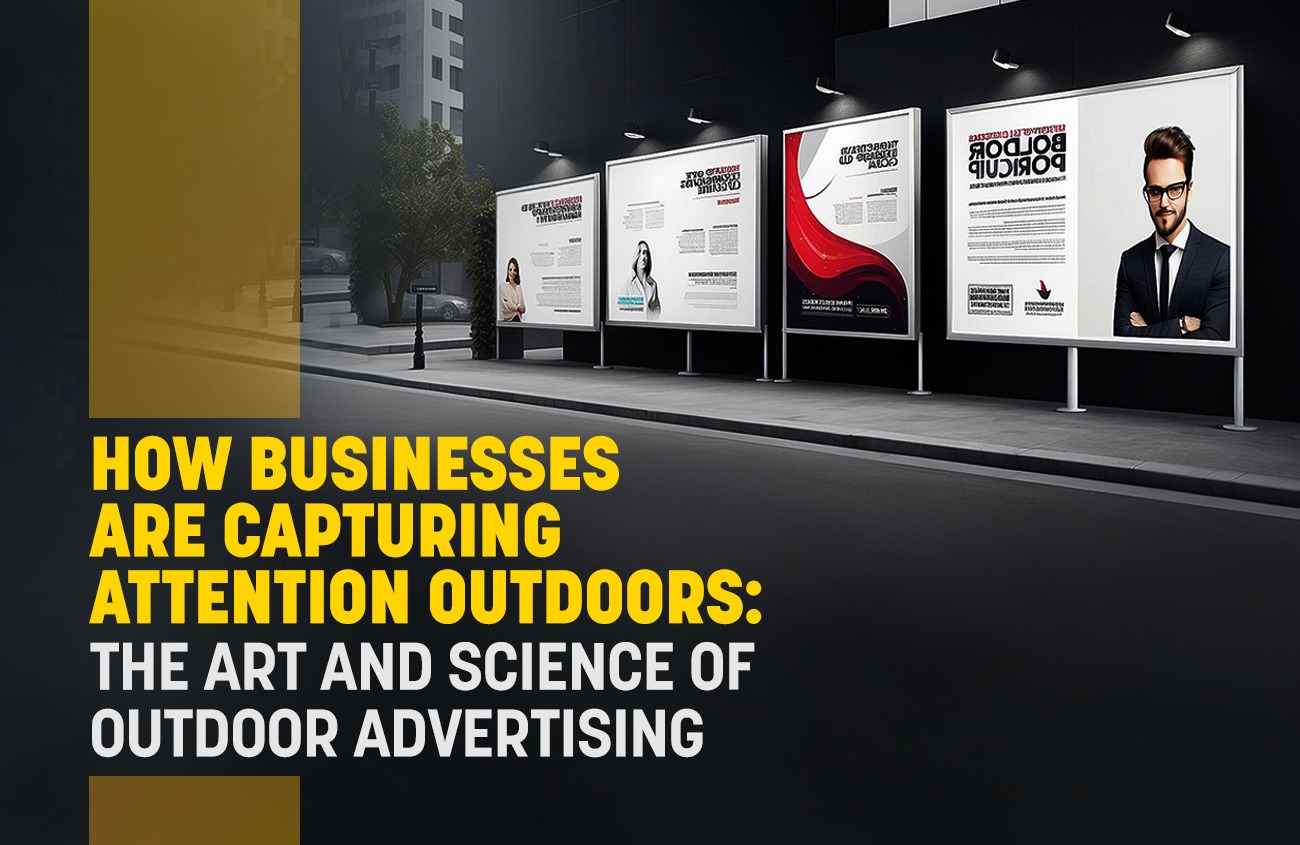How Businesses Are Capturing Attention Outdoors: The Art and Science of Outdoor Advertising
- By CHAMS DIGITAL
- May 17 , 2024
In a world where digital marketing often takes center stage, the art of capturing attention outdoors has evolved into a sophisticated and dynamic field. Outdoor advertising, also known as out-of-home (OOH) advertising, has embraced technology, creativity, and strategic thinking to remain relevant and impactful. From bustling urban centers to serene rural highways, businesses are innovating in remarkable ways to capture the eyes and imaginations of potential customers. Here’s a look at some of the most captivating trends and strategies in outdoor advertising today.
Outdoor advertising, or out-of-home (OOH) advertising, is evolving with creativity and technology. From busy city streets to quiet country roads, businesses are finding innovative ways to grab our attention. Here’s a look at some exciting trends and strategies in outdoor advertising.
1.The Power of Digital Billboards
Digital billboards have revolutionized the landscape of outdoor advertising. Unlike traditional static billboards, digital versions offer the flexibility to change messages in real time, allowing businesses to run multiple campaigns simultaneously or adjust content based on the time of day, weather, or current events. This adaptability not only maximizes the impact of advertising but also engages viewers with timely and relevant information.
For example, McDonald’s utilizes digital billboards to promote different menu items depending on the time of day – breakfast items in the morning, lunch options in the afternoon, and dinner specials in the evening. This targeted approach increases the likelihood of driving traffic to their restaurants.
2. Interactive and Experiential Campaigns
Engaging consumers in a memorable way is key to making a lasting impression. Interactive and experiential campaigns are designed to create a direct connection with the audience. These campaigns often involve installations that people can touch, feel, or even become part of.
One standout example is Coca-Cola's "Share a Coke" campaign, which featured interactive billboards allowing people to input their names and see personalized messages. This not only generated excitement and social media buzz but also reinforced the brand’s message of sharing and personalization. Augmented Reality and Virtual Reality
Augmented Reality (AR) and Virtual Reality (VR) are pushing the boundaries of what’s possible in outdoor advertising. By blending the physical and digital worlds, these technologies offer immersive experiences that capture attention and engage consumers on a deeper level.
A notable implementation of AR in outdoor advertising is Pepsi's "Unbelievable Bus Shelter" campaign in London. Commuters waiting at a bus stop were surprised by digital screens that appeared to show unbelievable scenarios, like a tiger walking down the street or a flying saucer landing. This not only entertained passersby but also created viral content that was widely shared online.
3. Creative Use of Space
The physical space where ads are placed can significantly impact their effectiveness. Innovative use of space, including building wraps, 3D installations, and guerrilla marketing tactics, can turn ordinary locations into eye-catching advertisements.
Nike’s use of building-sized murals and installations that interact with the urban environment exemplifies this trend. By transforming entire buildings into canvases, Nike not only grabs attention but also integrates its brand into the very fabric of the cityscape.
. Data-Driven Strategies
The integration of data analytics in outdoor advertising has enabled more precise targeting and measurement of campaign effectiveness. By leveraging data, businesses can strategically place ads where they are most likely to reach their target audience and adjust campaigns based on performance metrics.
For instance, Clear Channel Outdoor’s RADAR technology uses anonymized mobile data to understand traffic patterns and audience demographics, ensuring that ads are seen by the right people at the right time. This data-driven approach enhances the ROI of outdoor advertising by making it more efficient and effective.
5.Sustainability and Social Responsibility
As environmental concerns grow, businesses are also focusing on sustainability in their outdoor advertising efforts. Eco-friendly billboards made from recycled materials or powered by renewable energy sources not only reduce environmental impact but also appeal to increasingly conscious consumers.
A prominent example is the partnership between Corona and Parley for the Oceans, which created billboards made from ocean plastic waste. This initiative not only promoted Corona’s commitment to sustainability but also raised awareness about ocean pollution.
Outdoor advertising is evolving in exciting ways, blending technology, creativity, and sustainability. From dynamic digital billboards and interactive experiences to immersive AR and VR, businesses are finding innovative ways to capture our attention. By using data smartly and thinking outside the box, they’re turning everyday spaces into eye-catching ads. As this field grows, its mix of art and science will keep surprising and engaging us, making the world a more interesting place.
